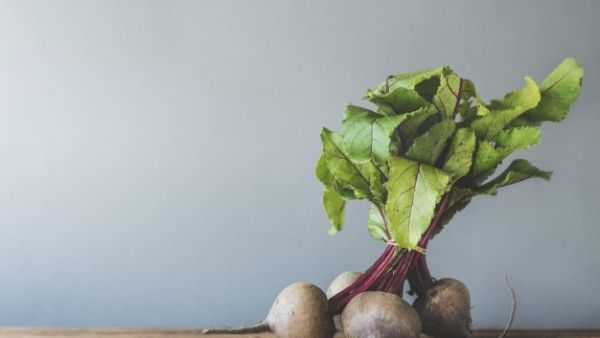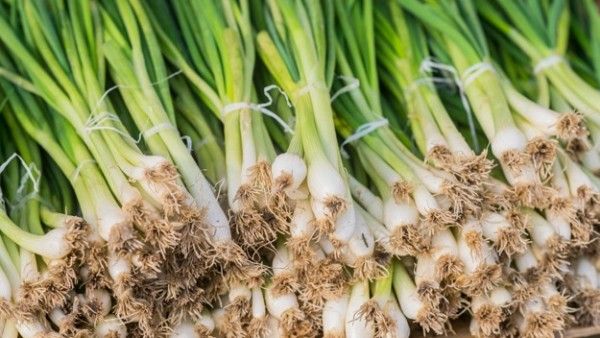Just In
- 15 min ago

- 2 hrs ago

- 2 hrs ago

- 3 hrs ago

Don't Miss
- News
 Electoral Bonds Plea In SC Seeks SIT Probe Into Alleged Quid Pro Quo Between Parties Corporates
Electoral Bonds Plea In SC Seeks SIT Probe Into Alleged Quid Pro Quo Between Parties Corporates - Sports
 Pakistan vs New Zealand 4th T20I: Gaddafi Stadium Pitch Report, Weather Forecast, T20 Record & Stats
Pakistan vs New Zealand 4th T20I: Gaddafi Stadium Pitch Report, Weather Forecast, T20 Record & Stats - Automobiles
 The Rise and Fall of the TVS Jive: India's Pioneering Clutchless Motorcycle
The Rise and Fall of the TVS Jive: India's Pioneering Clutchless Motorcycle - Education
 TS Inter Results 2024 Toppers' List, Check Out the Districts That Top the List
TS Inter Results 2024 Toppers' List, Check Out the Districts That Top the List - Finance
 PayU Gets RBI's In-principle Nod To Operate As Payment Aggregator
PayU Gets RBI's In-principle Nod To Operate As Payment Aggregator - Movies
 The Family Star OTT Release Date & Platform Revealed: Here's When & Where To Watch Vijay Devarakonda’s Film
The Family Star OTT Release Date & Platform Revealed: Here's When & Where To Watch Vijay Devarakonda’s Film - Technology
 Realme Narzo 70 5G, Narzo 70x 5G Launched in India: Check Price, Specs, Availability
Realme Narzo 70 5G, Narzo 70x 5G Launched in India: Check Price, Specs, Availability - Travel
 Fly in Luxury: 10 Ways to Get Free Flight Upgrades
Fly in Luxury: 10 Ways to Get Free Flight Upgrades
Get Your Gardening Gloves On! Here’s A List Of Easiest Vegetables To Grow Indoors In India
It's starting to sound more and more appealing to grow vegetables at home - it's the first step towards being sustainable. Also, it saves you a trip to the grocery store, and your green thumb will thank you for it.
In case you don't have a garden or outdoor space to grow vegetables, pick plants that don't need deep roots. You'll either have no veggies or the plant will be stunted if you don't grow it properly.
Indoor plants are easy to grow with little care. Here's a list of the best vegetables to grow in your indoor garden.
Easiest Vegetables To Grow Indoors In India

1. Tomatoes
Tomatoes are an easy choice for indoor gardening.
Gardening tips: You may start growing your seedlings in a planting tray or a small container, such as a can. Plant the seeds about a quarter-inch deep in the soil, not more than three seeds per hole. Water the seed until the soil is moist. Place the pots in an area that receives lots of warm sunlight throughout the day, and water them frequently to avoid the soil from drying out. In five to ten days, you should observe the germination of the seed.
2. Carrots
Despite how long carrots can grow, they're one of the easiest vegetables to grow indoors. Carrots are a great source of vitamins and minerals, plus they're easy to grow all year long.
Gardening tips: It is recommended that you use a 12-inch-deep pot or container, or eight inches deep for smaller varieties. The pot should be filled with potting soil, stopping about an inch from the top. Once the soil is moist, poke a few hills into the soil a few inches apart, spread two to three seeds, and cover with dirt. The box should be placed in a sunny location, receiving at least six hours of sunlight each day. It should also be well-watered (until the topsoil is moist).

3. Beetroots
In addition to being filled with nutrients such as potassium, magnesium, and Vitamin C, beetroots also assist in controlling blood pressure and can increase athletic performance.
Gardening tips: Fill a large container (at least ten inches deep) with potting soil that is light, drains well, and is well drained. The soil should have a neutral pH level. The seeds should be planted about a quarter-inch deep in the soil with plenty of space between each. Ensure that the soil is moist but not waterlogged and position it in a location that receives ample sunlight. Within two weeks, you should first see seedlings, and you can remove any extraneous ones to allow larger plants to grow. Continue to water and provide sunlight for the next 45 to 60 days.
4. Microgreens
As tiny fresh sprouts, microgreens are among the easiest foods to grow indoors, especially given that they don't require a lot of space or time.
Gardening tips: Typically, a shallow tray about two inches deep is adequate. Put down moist soil, scatter your seeds, barely covering them with soil (press gently so that the seeds make good contact with the damp soil. Keep the soil moist with a spray, and you should see germination within a few days. Harvest the plants when the seedlings have two sets of true leaves. Snip them off at the soil level with scissors.

5. Bell Peppers (Capsicum)
Bell peppers require a little more work and care than other plants you can just place in a warm, sunny place and water frequently, but they are well worth the effort.
Gardening tips: Fill up a planting tray with loose potting soil and poke a small hole in the centre of each module of soil. Leave over bell pepper seeds in each hole and cover with soil. The seedlings should be placed in a warm, moist place until they sprout and have one or two sets of leaves. Place it in the sunshine and water it well each day. The best time to grow capsicum in north India is during the summer months. On the other hand, it can be grown all year round in southern India.
6. Hot Peppers
Pepper plants are tropical perennials that thrive in warm weather and full sunlight. However, because they are self-pollinating, they can thrive indoors.
Gardening tips: They require high levels of light between 14 and 20 hours per day, and they thrive at temperatures of 70 degrees Fahrenheit. Allow the soil to dry out between waterings and place the potted plants in a container that is at least eight inches tall.

7. Herbs
Oregano, thyme, rosemary, chives, parsley, and basil are considered to be some of the easiest herbs to grow indoors, though exact care will vary depending on the species.
Gardening tips: Add a nutrient-rich, fast-draining potting soil to a container with drainage holes, and then plant the seeds for whatever herb you wish to grow. Cover the plant with soil, place it in a sunny location, water regularly to keep the topsoil moist but not soaked, and fertilize it with a liquid fertilizer several times a month.
8. Salad Greens
You can grow salad greens on your own, such as iceberg lettuce, romaine lettuce, arugula, and spinach. Salad greens have the advantage of being harvested while the plant continues to grow.
Gardening tips: Poke a few holes in the potting soil with your finger, a few inches apart (four inches is ideal) in a large planter box filled with potting soil. Plant a few seeds for whatever salad green you are growing in each hole and then cover them. The soil should be moistened, the planter box should be placed in a spot that receives plenty of sunlight, and regular watering should be maintained until the soil becomes moist. In approximately four to six weeks, you should be able to harvest your plants.

9. Green Onions (Scallions)
As a vegetable, green onions thrive indoors because they are easy to maintain and do not require as much sunlight as some other vegetables.
Gardening tips: Cut off the ends of the bulbs, leaving the roots attached. Place the bulbs root-end down in a small jar. Provide enough water to cover the roots but leave the tops of the roots exposed. Place on a windowsill and keep the roots moist. In a few days, green shoots will emerge from the tops of the bulbs. These shoots will grow rapidly following that. It is important to keep the roots submerged and to change the water at least once a week.
On A Final Note...
All aspects of the plant's growth and environment are under your control when gardening indoors. You maintain the soil, water, and fertilizer. You don't have to worry about the weather or outside critters, and you might be able to grow veggies all year round.


 Click it and Unblock the Notifications
Click it and Unblock the Notifications





